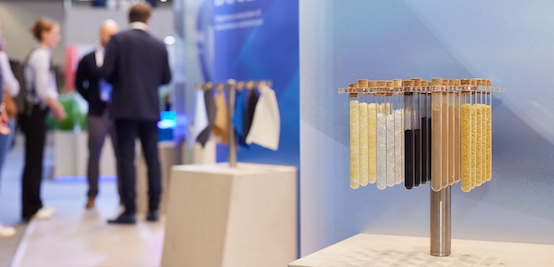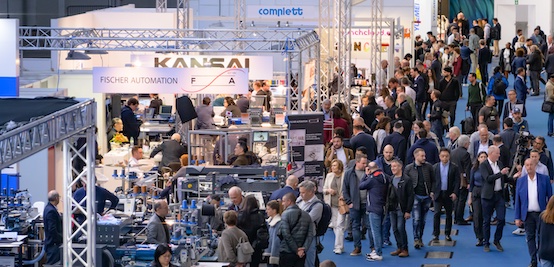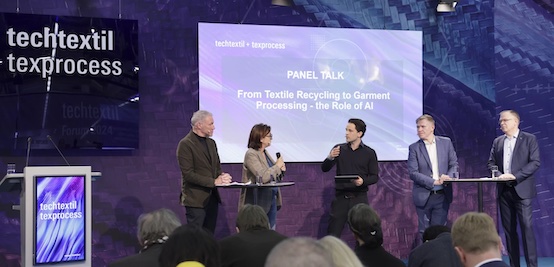#Techtextil 2017
Techtextil: Every fibre in our body
- Techtextil presents hightech textiles for medical applications
- Dialogue between medicine and textiles moves into second round
Expectations are high for new fibre-based products that can be used in medical treatments and therapeutic care, on the one hand, and for revenue potential, on the other. Trade and professional visitors involved in the medical and health-care business can look forward to a range of new fibre-based research findings, together with the solutions that derive from them, in the Medtech section at Techtextil. Areas of application include hospitals, rehabilitation and care institutions and / or the care of the elderly in their homes.
Potential for high-tech fibres in 2020
Fibres form the basic building blocks of life. In terms of the medical and healthcare business, they are becoming an increasingly important focus for German textile research in a number of collaborations with small to medium-sized manufacturers of medical technology. Current development projects are showing that models to be found in the world of plants and animals are not only being replicated in the laboratory, but, in joint work with other research disciplines, clinics and industry, they are laying the groundwork for new operative possibilities. What, then, can we expect of high-tech fibres in 2020?
“First and foremost, that the human body will tolerate them and that they will have adaptable properties in terms of rigidity and resorbability. Some of them will be new types of product, covering implants and therapeutic aids that can be individually adjusted to suit the individual patient,” says Dr. Klaus Jansen from ‘Forschungskuratorium Textil’, the umbrella brand for German textile research. Products now on the horizon are, for instance, hollow fibres as components of wound dressings that can administer doses of active medicines directly into the wound. But there are also stents, for use in the heart and lungs that can be populated with the body’s own cells, so as to resist rejection for longer.
Highly specialized medical textiles not only open up new possibilities, with regard to transplantation medicine. Things that have, for the most part, not yet progressed beyond the laboratory stage at textile research establishments in Dresden, Aachen and around Stuttgart, will, in just a few years, undoubtedly find their way into clinical practice. Examples here might be textile dressings with built-in sensors, new kinds of bronchial stent and portable artificial lungs with core elements made from textiles. Fiber-based innovations are of huge importance for an ageing generation – above all, in situations where clothing with smart-textile components can measure vital parameters and environmental influences and channel the data in the right direction. The ‘smart jacket’ from Zella is part of this trend as, indeed, are the gym mats with built-in sensors or the moisture-sensitive incontinence inserts for the bedlinen, from an Austrian start-up company, which aims to help improve the processes of care.
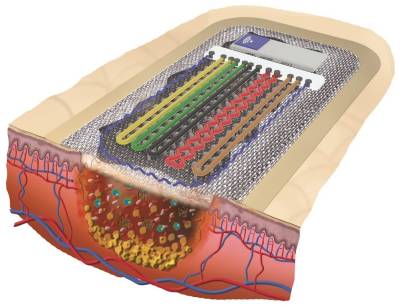
Permanent healing signals from the wound
To name but one product idea with potential based on some complex science: three research institutes – the Institute of Textile Machinery and High-Performance Materials Technology (ITM) and the Institute of Solid State Electronics (IFE) at the Technical University of Dresden, as well as the Textile Research Institute for Thuringia-Vogtland (TITV) in Greiz – have already developed miniaturized, textile-based sensors for the continuous monitoring of chronic wounds and demonstrated their efficacy. It is hoped that they will make it possible to record complex physiologically and chemically relevant factors.
As part of an initial research project, supported by sponsorship from the Federal German Ministry of Economic Affairs, embroidery techniques were used to create modular networks of sensors applied to textile and non-textile substrates. The modular networks were then connected up to create functional monitoring systems. Textile-based sensoric networks like this can be incorporated in dressings around wounds, so as to record real-time physiological parameters, providing objective data that might indicate any disruption to the healing process. Such continuous monitoring, say the researchers, also makes it possible to gain a better understanding of the relationship between the relevant parameters surrounding the wound. In a similar way, it should also be possible to record people’s vital parameters in leisure activities and sports, or to monitor the functioning of implants.
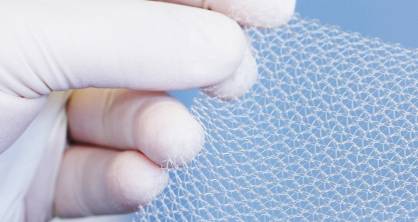
The history of medical textiles reaches far back to the time of the Pharaohs. Woven bandages for wounds were as common as the use of linen for sutures. The industrial production of surgical cotton in Germany began in 1871; in 1882, Beiersdorf acquired a patent for sticking plaster. In the 50s of the last century, science began to make use of the fact that the human blueprint was not short of fibres: muscles, ligaments, blood vessels, skin and organs – all tissue.
I the early seventies, the student of textile technology, Heinrich Planck, was completing his examination thesis at the Institute of Textile Technology and Process Engineering (ITV) in Denkendorf near Stuttgart. In it, he reflected on the possibility of creating prosthetic blood vessels in polyester on a flat-bed knitting machine that were close to what nature had created. With his revolutionary idea of replicating bionic principles and the discoveries of physiology by traditional textile technologies Planck launched the entire research field that we now know as medical textiles.
Meanwhile, textile skin replacement “made in Denkendorf”, based on regenerative medicine, has provided relief for thousands of burn victims worldwide and are now set to revolutionize the treatment of chronic wounds as well.



